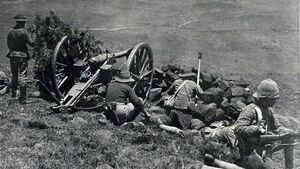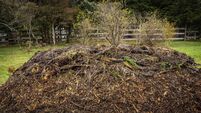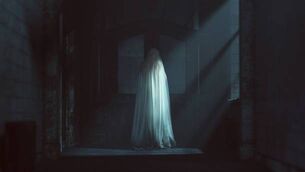The Boer War and the impact it had on Athy

British soldiers during the siege of Ladysmith in 1899
Last Tuesday night, the Community Arts Centre in the Methodist Church, Athy hosted the second lecture in the Athy Historical Society’s Autumn series of lectures.
Delivered by Naas historian Liam Kenny, the title of the lecture was ‘From ballot box to council chamber: Kildare’s first county council election 1899’. Over the course of an hour, Liam delivered a fine lecture to a rapt audience, which ranged over the political, cultural and economic context of the time in which the first county council elections were held.
What interested many of the attendees was the skilful way in which Liam contextualised the election in terms of Irish society and politics at that time. This was a society in which politics was dominated by the middle class and the Home Rule party. The successful county council candidate from Athy was Matthew Minch, who, at the time, was the MP for South Kildare. However, with the outbreak of the second Boer War in October 1899, the war itself began to exert an interesting influence on Irish polities in society. Nascent militant republicanism began to develop inspired by the plucky and determined Boer fight against the British empire in South Africa.
As this month marks the 125th anniversary of the outbreak of the war, it is interesting to reflect on how those events thousands of miles away impacted on the people of Athy.
The Leinster Leader reported on 6 January 1900, when the war was only three months’ old, that ‘Athy boys with their keen sense of humour raised a Boer flag over the town hall over the dead of night with the police unable to ascertain their purpose’. The Nationalist and Leinster Times gave an amusing account of how the offending ‘Boer flag’ was removed from the town hall: ‘In the morning as soon as the first drinks of dawn appeared a grand green flag floated from the pinnacle which summands the town hall. William McCleary, the town hall caretaker, volunteered to remove the flag and at about three o’clock he ascended to the roof of the building. He had armed himself with a fishing rod, to the end of which he had tied a knife. He cut through the strands of rope which held the standard in position, and after some exertion the cords were cut and the emblem of Krugerdom collapsed.
‘The flag incident has occasioned a great deal of talk about Athy and there is much conjecture as to the individuality of the daring crew who seized on the principal building of the town in this way. Accounts brought by native runners from Dunbrinn direction disclosed the fact that, after dispersion by the police, the band retired to a lonely kopje overhanging the Barrow and called Coneyboro. Here, they made a bonfire and when it was in full blaze they threw in a shell in the shape of a gallon of paraffin. The fluid exploded with a report so loud that it awakened sleepers in distant Grangemellon.’ In addition to the newspapers, letters home from Athy soldiers were an important source of information about the conflict. Paddy Connors, who was then serving with the Royal Dublin Fusiliers, wrote to his brother about the first major battle he was involved in in the war. He noted that three men from the town by the names of Murphy, Kenny and Flynn had been dangerously wounded.
Connors went on to write: ‘I like being out here, except for seeing so many disabled for life. Thank God, I am very lucky. My helmet was knocked off by a bit of shell when I was carrying a wounded corporal and he got shot dead in my arms. When I was acting as an escort for the guns, a shell fell in front of me but did not burst.’ The dubious distinction of being the first British officer to be killed in the conflict lies with Captain George Anthony Weldon. Weldon was the grandson of Sir Anthony Weldon of Kilmoroney House, Athy. Weldon was an officer in the 2nd Battalion of the Royal Dublin Fusiliers, which was part of a force tasked with taking a hill called Talana which was occupied by Boer forces. In attempting to save the life of a Private Gorman, who had been wounded by Boer marksmen, Weldon was killed. Later that evening, Weldon’s pet terrier was found waiting patiently by his master’s lifeless body. Weldon was buried that same afternoon in a small cemetery facing the hill on which he met his death.
For most of us, the Boer War has little lasting impact on our collective memory but there are little resonances here and there. Those of an older generation will recall that one of the malting buildings of Minch Nortons was called Ladysmith, due to the involvement of a number of employees of Minch’s at the battle of Ladysmith during the war.





